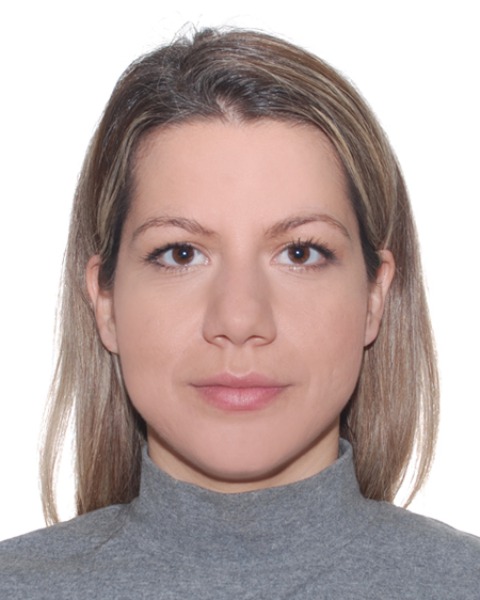Cellular and T cell engager Immunotherapy
Poster Session 1
P-021: Durable response to CAR T cell treatment is associated with the downstream triggering of native T cell immunity: a lesson learned from B cell lymphoma patients
Wednesday, September 27, 2023
1:30 PM - 2:30 PM EEST

Dimitra Karagkouni, PhD
Research Fellow
Harvard Medical School, Department of Pathology, Beth Israel Deaconess Medical Center, Broad Institute of MIT and Harvard, United States
Introduction: CD19-directed CAR T cell therapy results in durable response in a subset of large B cell lymphoma (LBCL) patients in the absence of persistent circulating CAR T cells. We postulated that durable response to CAR T therapy depends on downstream triggering of native T cell immunity. We performed single-cell immunoprofiling on peripheral blood mononuclear cell (PBMC) and RNAseq on baseline tumor from patients participating in the ZUMA 1 study.
Methods: Single cell immunoprofiling (5’ expression + V(D)J, 10x Genomics) was performed on 92 PBMC samples from ZUMA-1 patients (N=32), collected at leukapheresis, 4 weeks, 6- and 12-months post CAR T. RNAseq was performed on FFPE baseline lymphoma samples (N=17). We defined 3 groups: non-responders, relapsed within 1 year from CAR T infusion, and long-term responders. Approximately half a million cells passed the quality check, capturing 73 cellular populations.
Results: Patients with durable response exhibited significantly higher proportions of CD8 T cells and an increased CD8/CD4 ratio pre-/post-CAR T, compared to the other cohorts. Long-term responders were characterized by a significantly increased cytotoxic signature, mostly pronounced at 4 weeks and 6 months post-CAR T. A higher abundance of CD4 cytotoxic T cells, highly cytotoxic CD8 T cells, as well as of early effector memory and pro-inflammatory CD8 T cells was observed post-CAR T. In contrast, patients with early relapse showed increased levels of regulatory T cells pre-/post-CAR T.
In the long-term responder group compared to the patients with refractory or relapsing disease, pairwise comparisons of the TCR proportions before and after CAR T infusion demonstrated a higher abundance of expanded clonotypes within the cytotoxic CD8 and CD4 T cell compartment, followed by gradually increased numbers over the course of the study. Similar shared PB T cell clones and tumor antigen sequences derived from the RNAseq samples, as well as the high mutational burden, observed in a subset of responders, suggest a (neo)antigen-specific response driven by common epitopes.
Monocyte and NK cells were less prevalent in responders before treatment, guided by differences in phagocytic monocyte and inhibitory NK cell abundance. Ligand-receptor expression patterns revealed strong cell-cell interactions between phagocytic monocytes and T regulatory cells 6 months post-CAR T, suggesting a negative immunoregulatory role of these cells.
Conclusions: The application of single-cell immunoprofiling on longitudinal samples from ZUMA-1 patients demonstrated distinct cellular and clonal profiles between long-term responders and patients with relapsed or refractory disease. These findings support our hypothesis of an important role of the non-CAR T immunity in maintaining sustained response to CAR T therapy. Our results can be used to better understand CAR T therapeutic efficacy and inform patient stratification and management across hematological malignancies.
Methods: Single cell immunoprofiling (5’ expression + V(D)J, 10x Genomics) was performed on 92 PBMC samples from ZUMA-1 patients (N=32), collected at leukapheresis, 4 weeks, 6- and 12-months post CAR T. RNAseq was performed on FFPE baseline lymphoma samples (N=17). We defined 3 groups: non-responders, relapsed within 1 year from CAR T infusion, and long-term responders. Approximately half a million cells passed the quality check, capturing 73 cellular populations.
Results: Patients with durable response exhibited significantly higher proportions of CD8 T cells and an increased CD8/CD4 ratio pre-/post-CAR T, compared to the other cohorts. Long-term responders were characterized by a significantly increased cytotoxic signature, mostly pronounced at 4 weeks and 6 months post-CAR T. A higher abundance of CD4 cytotoxic T cells, highly cytotoxic CD8 T cells, as well as of early effector memory and pro-inflammatory CD8 T cells was observed post-CAR T. In contrast, patients with early relapse showed increased levels of regulatory T cells pre-/post-CAR T.
In the long-term responder group compared to the patients with refractory or relapsing disease, pairwise comparisons of the TCR proportions before and after CAR T infusion demonstrated a higher abundance of expanded clonotypes within the cytotoxic CD8 and CD4 T cell compartment, followed by gradually increased numbers over the course of the study. Similar shared PB T cell clones and tumor antigen sequences derived from the RNAseq samples, as well as the high mutational burden, observed in a subset of responders, suggest a (neo)antigen-specific response driven by common epitopes.
Monocyte and NK cells were less prevalent in responders before treatment, guided by differences in phagocytic monocyte and inhibitory NK cell abundance. Ligand-receptor expression patterns revealed strong cell-cell interactions between phagocytic monocytes and T regulatory cells 6 months post-CAR T, suggesting a negative immunoregulatory role of these cells.
Conclusions: The application of single-cell immunoprofiling on longitudinal samples from ZUMA-1 patients demonstrated distinct cellular and clonal profiles between long-term responders and patients with relapsed or refractory disease. These findings support our hypothesis of an important role of the non-CAR T immunity in maintaining sustained response to CAR T therapy. Our results can be used to better understand CAR T therapeutic efficacy and inform patient stratification and management across hematological malignancies.
